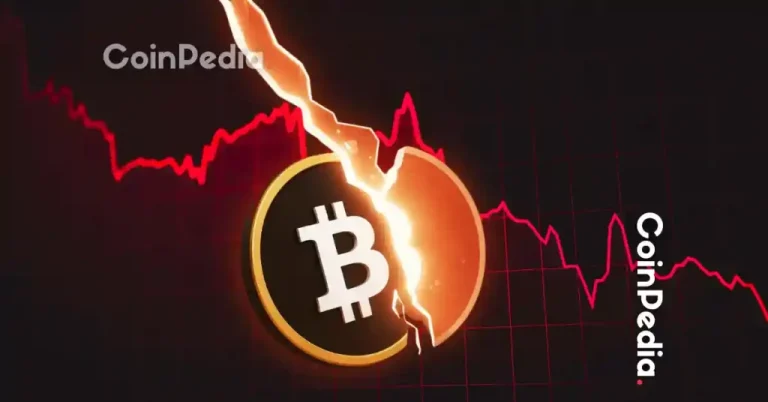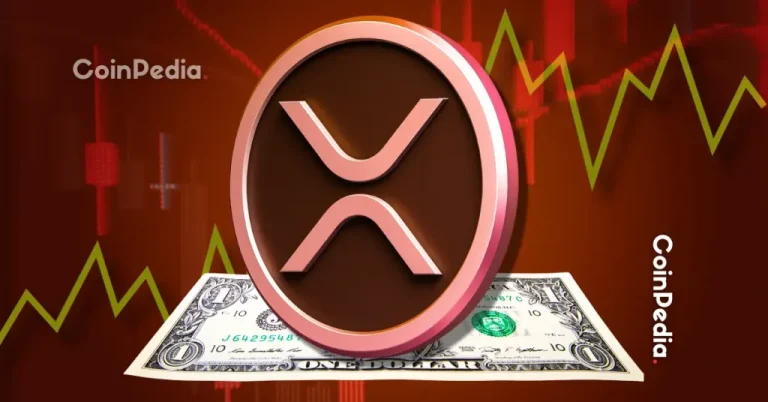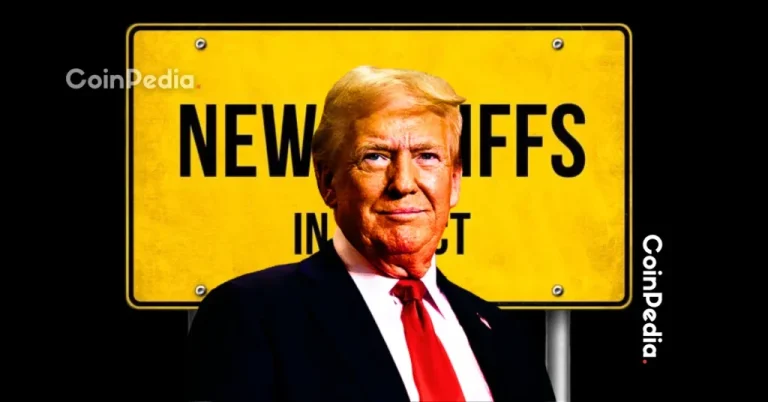The post Coinpedia Digest: This Week’s Crypto News Highlights | 11th October, 2025 appeared first on Coinpedia Fintech News
Volatility stayed high, but so did innovation. Amid new policies, global headlines, and market pressure, crypto kept pushing forward.
#1 Trump’s China Tariff Triggers $19B Crypto Meltdown
The crypto market saw its biggest one-day liquidation ever, with over $19 billion erased in 24 hours. The crash followed Donald Trump’s new 100% tariff on China, which rattled global markets and reignited trade war fears. Bitcoin dropped over 12%, briefly sliding below $113,000 before recovering slightly.
More than 1.6 million traders were liquidated as prices plunged. Analysts called it a “black swan event,” while some traders saw it as a rare chance to buy the dip.
#2 SEC to Finalize Crypto Innovation Rulebook by Year-End
U.S. SEC Chair Paul Atkins said the agency plans to roll out a formal “innovation exemption” for crypto firms by the end of this year. The rulebook, he explained, would give companies room to build new blockchain services without fear of constant enforcement.
Atkins called the proposal a “top priority” even as the U.S. government shutdown slows operations. He said the move is meant to undo “four years of repression” and keep innovation at home instead of pushing it abroad.
#3 North Dakota Reveals the “Roughrider Coin”
North Dakota has launched the Roughrider Coin, a USD-backed stablecoin aimed at modernizing how local banks move money. The digital token will first be used for interbank loans, overnight lending, and infrastructure financing.
Officials say it could make transactions faster, cheaper, and more transparent. Backed 1:1 by the U.S. dollar, the coin offers the stability banks need to trust blockchain systems. With this move, North Dakota becomes one of the first U.S. states to test digital dollars in traditional banking.
#4 Metaplanet Pauses Share Rights to Refocus on Bitcoin Strategy
Metaplanet is hitting pause. The Tokyo-based firm has suspended the exercise of its 20th to 22nd series of stock acquisition rights, covering about 398 million potential shares issued to EVO Fund. The freeze, running from October 20 to November 17, is part of a broader plan to manage capital smartly while keeping focus on Bitcoin.
President Simon Gerovich said the move helps “optimize capital raising strategies” as Metaplanet continues to grow its 30,823 BTC holdings.
#5 Lummis Proposes Tax Relief for Small Bitcoin Payments
Senator Cynthia Lummis is pushing a plan that could make paying with Bitcoin as simple as swiping your card. Her proposal introduces a tax exemption for small crypto payments under $300, with a yearly cap of $5,000. That means no more calculating capital gains every time someone buys coffee with Bitcoin.
Lummis says it’s time to treat crypto like currency, not property. Critics, including Senator Elizabeth Warren, argue the move could create loopholes, but it may still boost real-world Bitcoin use.
#6 Morgan Stanley Recommends 2-4% Bitcoin Allocation
Morgan Stanley is warming up to crypto. The investment bank now recommends clients keep 2% to 4% of their portfolios in Bitcoin and digital assets, calling Bitcoin “a scarce asset, akin to digital gold.”
The report says investors should rebalance holdings every quarter to manage risk and volatility, ideally through exchange-traded products. The guidance reflects a more open stance toward crypto, coming just as Bitcoin touched a new all-time high.
#7 CZ Could Return to Binance
Changpeng Zhao, better known as CZ, could be making a comeback at Binance. Fox Business reporter Charles Gasparino says White House discussions around granting him a presidential pardon are “heating up.”
CZ stepped down as CEO in 2023 after pleading guilty to a Bank Secrecy Act violation and serving four months in prison. If pardoned, he may rejoin Binance in a strategic role – a move that could reshape the exchange’s image and mark a turning point in U.S. crypto politics.
Also Read: Binance’s CZ Responds to Hyperliquid Rumors in New “Gossip Tweet”, Community Reacts
#8 Crypto Voters Could Sway Key States in 2026 Midterms
Crypto is becoming a political force. A new survey shows 64% of cryptocurrency investors consider a candidate’s stance on digital assets “very important” when voting in the 2026 midterms. Many of these voters are young, tech-driven, and financially active.
While most are registered Democrats, a majority plan to back Republican candidates, frustrated by slow regulation. With over 50 million Americans owning crypto, both parties are now racing to win this growing voter base.
#9 Wall Street’s S&P Enters Crypto With a 50-Asset Index
S&P Global has launched its first crypto index, blending traditional markets with digital assets. The new S&P Digital Markets 50 Index tracks 15 major cryptocurrencies and 35 blockchain-linked stocks in one benchmark. Built with Dinari, the index will also be tokenized on-chain through the firm’s dShares platform, giving investors direct blockchain access.
“Digital assets have moved from the margins into a more established role,” said Cameron Drinkwater of S&P Dow Jones Indices, calling it a milestone for global markets.
#10 Bitcoin Could Join Gold in Central Bank Reserves, Says Deutsche Bank
Deutsche Bank economists Marion Laboure and Camilla Siazon believe Bitcoin could soon stand beside gold in central bank reserves. Their latest report says the move may come by 2030, driven by growing institutional trust and a weaker U.S. dollar.
They noted that the dollar’s share of global reserves has dropped from 60% in 2000 to 41%, fueling the rise of gold and interest in Bitcoin. The report adds that digital assets won’t replace the dollar, but will complement national currencies as regulation and confidence improve.
In the Spotlight
Here’s a few quick hits you shouldn’t miss!
Bitcoin Outperforms S&P 500 by 88% Since 2020: Despite record highs, the S&P 500 still trails Bitcoin – a $100 investment in 2020 would be nearly $1,500 today, highlighting crypto’s unmatched returns.
Vietnam Caps Crypto Pilot at Five Licensed Exchanges: Officials will issue just five licenses under the new crypto pilot, a move experts say favors big players and could push smaller innovators and liquidity out of Vietnam’s fast-growing market.
Russia’s A7A5 Stablecoin Moves $6B Despite Sanctions: The ruble-backed token, legally approved in Russia and tied to sanctioned Promsvyazbank, has processed $6 billion in cross-border trades – showing how Moscow uses crypto to bypass restrictions.
New Yorkers Get Green Light for Crypto Staking: Coinbase has won state approval to offer staking services in New York, letting users earn rewards on assets like Ethereum and Solana – expanding access now to 46 U.S. states.
Citi Ventures Invests in BVNK to Boost Stablecoin Infrastructure: Citi’s venture arm has made a strategic investment in BVNK, backing its mission to scale global stablecoin payments. BVNK processes over $20B annually for enterprises like Worldpay and Flywire.
What’s Next for Crypto?
Major shifts to expect ahead
- Political headlines are steering the market – from tariffs to pardons, policy is the new volatility driver.
- Regulation is shifting from reaction to framework, with the U.S. finally setting clearer lanes for innovation.
- Stablecoins are evolving from fintech tools to state-backed infrastructure, blurring lines between crypto and traditional banking.
- Institutional adoption is no longer hypothetical – Wall Street indexes and bank advisories now treat digital assets as core exposure.
- Global diversification continues, with Asia, Europe, and even U.S. states experimenting with local digital currencies and pilots.
Stay tuned for next week’s roundup of the biggest moves shaping the crypto market.










